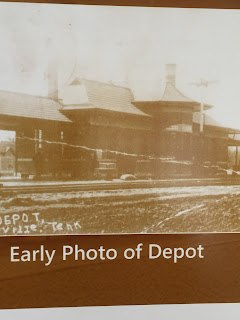The Cookeville Depot was built in 1909, as part of the Tennessee Central Railroad system. It was in operation until July 31, 1955. The depot served as a place for people as well as cargo, and livestock to be transported by train to other towns along the Tennessee Central line. During both World Wars, the depot served as the departure point for numerous soldiers from the Upper Cumberland area. The depot is special because of its architectural design with bay windows, and a pagoda style roof. When the railroad went bankrupt, the depot sat empty for many years. In 1984, it was purchased by the City of Cookeville for $1, and turned into a museum. Not long after, it was placed on the National Register of Historic places. Today it plays host to thousands of visitors each year. The museum contains many artifacts, most original to the building, it also has gifts, an electric train set, and an extensive inventory of rolling stock. There is also an excursion train that runs by each Fall from Nashville, and during the Summer months, movies are shown on the front lawn. The Cookeville Depot is truly a prime example of Americana. It is a Cookeville icon, and hopefully will remain one for years to come.
The Cookeville Depot in its heyday.
Map of the Tennessee Central Railroad.
Photo of Cookeville residents waiting for the final train to come to town on July 31, 1955.
The Cookeville Depot historical marker.
The Cookeville Depot is home to two cabooses, and a 1913 Baldwin locomotive.
Quite possibly the biggest attraction inside the depot is the electric train set.
Trains like the one above pass the depot frequently heading up the mountain to Monterey hauling sand.
Stay tuned for more blog posts about tales from Tennessee and beyond.
















